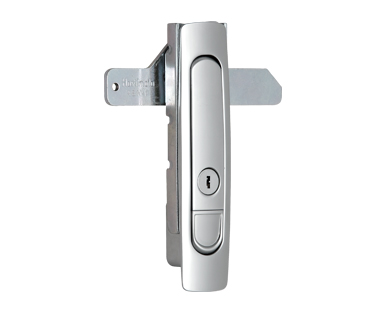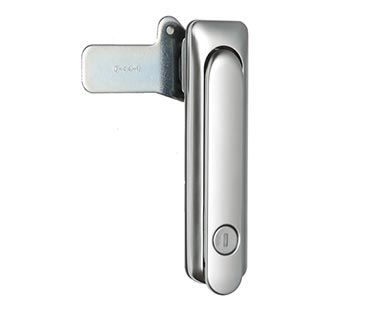cuntatta ci
ADDRESS:N ° 89, Strada Yezhang, Comunità Wuqiao, Città di Zhuanghang, Distrettu Fengxian
TEL:021-57407335
E-mail:[email prutettu]
U persunale di fustu in lega di zincu deve ammaistrà è capisce e caratteristiche di sti materiali, è l'analisi è l'interpretazione di e caratteristiche di l'alea di zincu sò cumunimenti utilizati.
1. Panoramica di Zinc Alloy
A lega di zincu hè dura è forte, è hè un sustitutu ideale per a machining, molding, printing,
materiali di fabricazione è assemblea. A tavula mostra e proprietà di l'aliati di zincu.
Ogni pruduttu in lega di zincu hà e so caratteristiche uniche, cusì sceglite u pruduttu chì megliu
adatta à i vostri bisogni.
Caratteristiche di a lega di zincu:
●duru è fermu
●High conductivity
trasferimentu di calore ●High
● Low costu materia prima
● Tridimensionalità precisa è stabile
●Good prestazione di muru magre
●Good rinfrescante performance, facile à cunnette vi
● High quality prodottu finitu
●Super anti-corrosion
●Environmentally friendly, recyclable
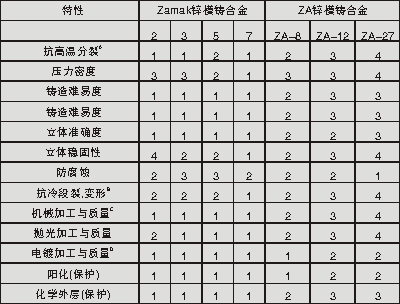
Indice di riferenza: 1 = indice più altu, 5 = indice più bassu
Una resistenza à u splitting à alta temperatura.
A capacità di a lega per resiste à a pressione generata da cambiamenti di temperatura, espansione termale
è cuntrazzioni.
B hè resistente à a frattura à u friddu è a deformazione.
L'abilità di l'alei per resiste à a deformazione, a frattura è a curvatura in ambienti di bassa temperatura.
C machining è qualità.
Evaluazione cumpleta di u tagliu, e proprietà di a rota di taglio, a qualità di u pruduttu finitu è a vita di l'utensili.
D electroplating trasfurmazioni è qualità.
L'abilità di i fusti a pressione per accettà è mantene a placcatura in u funziunamentu normale.
2. Die-cast alliage di zincu
I diseggiani strutturali di parte anu da piglià in contu e proprietà di scorrimentu di leghe di zincu
menzionatu sottu. Sti ligami sò più resistenti à l'umidità è u scossa cà l'aluminiu
liggi.
NO.1
N ° 2 Alloy di zincu
Zinc Alloy N ° 2 hè cunnisciutu ancu Kirksite. Hè a lega più forte di sta famiglia. Tuttavia,
per via di l'altu cuntenutu di ramu, serà accumpagnatu da e caratteristiche di l'anziane cù u tempu.
Stu cambiamentu includeva un ligeru aumentu di u voluminu (0.0014 mm/[inin]) dopu à 20 anni, cù
estensibilità ridotta è articulazione di riempimentu.
Ancu l'alia di zincu N ° 2 hè un bonu materiale di strumentu, hè raramente utilizatu da i pruduttori di die. Hà
cumportamentu creep supiriuri chè àutri alliages zincu, è si conserva altu durezza è forza dopu
anziane.
NO.2
N ° 3 Alloy di zincu
A lega di zincu #3 hè u materiale di scelta per i fusti di zincu è hè a lega di zincu più famosa in u Nordu
America. E so proprietà fisiche è chimiche equilibrate sò i più desiderati, soprattuttu
adattatu per stampi die-casting, cù forma tridimensionale stabile è anti-invecchiamento, chì hè
perchè a maiò parte di i muffa l'utilizanu cum'è materia prima. Zinc Alloy N ° 3 hà un bonu finitu è hè adattatu per
applicazioni di placcatura, pittura è acidu cromicu. Hè un materiale di casting standard mediu.
Se i materiali di durezza più alta sò richiesti, altri tipi di ligami di zincu deve esse cunsideratu.
NO.3
N ° 5 Alloy di zincu
A lega di zincu N ° 5 hè a lega di zincu più cumuna in Europa. A causa di u ramu più altu
cuntenutu, a durezza hè più forte, è dopu à perde una parte di u stretch (estensione cuntinuu),
l'extensibilità hè paragunata cù l'aleatu di zincu N ° 3, è a so forza hè rinfurzata. Questu
riduzzione in allungamentu, in u sicondu prucessu, affettarà a forma di u metallu, cum'è
curvatura, mortasa, swaging, crimping, chì deve esse cunsideratu da u designer. Perchè
a parte di u mercatu di l'alleazione di zincu n ° 3 hè assai altu, l'ingegneri di parti di solitu usanu n ° 3 invece
di N ° 5 quandu rinfurzà e parte. Tuttavia, sè vo fate prudutti chì necessitanu più altu
prestazione di allungamentu, avemu sempre ricumandemu à aduprà a lega di zincu n ° 5. Ancu s'è u crep
L'indice di l'aliati di zincu N ° 3 è N ° 5 sò simili, l'alia di zincu N ° 5 hà un creep più forte.
resistenza, è i dui tipi di leghe sò adattati per a machining arcu. Quandu a temperatura
cresce oltre a temperatura di l'ambienti nurmale, è ci sò esigenze di disignu speciali per
a capacità portante strutturale di e parti, a lega di zincu n ° 5 hè relativamente una scelta megliu.
NO.4
N ° 7 Alloy di zincu
Zinc Alloy N ° 7 agisce cum'è una mudificazione di Zinc Alloy N ° 3 per migliurà a fustibilità, a duttilità
è a qualità di a superficia. A maiò parte di l'alliage di zincu N ° 7 hè utilizatu per i cumpunenti di metalli, è quandu u
furmendu di u muffa hà esigenze spiciali per u so funziunamentu di assemblea sussegwente, tali
cum'è crimping o piling. Forte fustability, ma ancu adattatu per a pressatura di pareti sottili.
Certi moldi necessitanu una putenza più forte, in particulare parti cumplessi è delicate, ma questu
ùn significa micca chì esige esigenze di pressing speciale. Dimensioni precise di fustelle è
i paràmetri sò essenziali per evità scintille eccessive durante u splitting è tangente
prucessu. L'allungamentu d'alta qualità di l'aleazione di zincu N ° 7 hè ancu riflessu in a produzzione
prucessu, ma hè più riflessu in u funziunamentu di currezzione è grinding in u sicondu
prucessu.
NO.5
lega di zincu ZA-8
U percentinu apprussimativu di cuntenutu di aluminiu di l'indici numericu mostra chì u tipu ZA
Alloys sò significativamente più ricchi in alluminiu cà l'alliages Zamak.
Zinc Alloy ZA-8 hè stata urigginariamente fatta per leghe di fusione permanente cù finitura di alta qualità
e qualità di placcatura. Hè sopratuttu utilizatu com'è materiale decorativu. Ancu s'è sta alea ùn hè micca
cum'è l'altri alleati per a fusione, hà a megliu durezza è resistenza
deformazione. In termini di prestazione chimica, a durezza, a fermezza è a deformazione
resistenza di ZA-8 zinc alliage sò più forti cà altri alliati zincu hot-smelted. Questu hè u
solu lega ZA chì pò esse usata per a colata in camera calda.
NO.6
lega di zincu ZA-27
A causa di l'altu cuntenutu d'aluminiu di l'alea di zincu ZA-27, pò esse usatu solu per a camera fredda.
pressofusione. Queste leghe anu a più alta durezza è a più bassa densità in a famiglia ZA.
ZA-27 offre a più forte resistenza di disignu in ambienti di temperatura elevata cumparatu
à altre leghe di zincu cummerciale. Havi ancu una alta resistenza à a carica è à l'usura.
NO.7
AcuZinc5 in lega di zincu
AcuZinc5 tippu di lega di zincu hè statu sviluppatu da General Motors. A causa di u so ramu aumentatu
cuntenutu è ridutta aluminium cuntenutu, u so fermezza è resistenza à deformation hannu
hè statu migliuratu significativamente. A lega di zincu di tipu ACuZinc5 hà ancu una bona portata
capacità.
A deformazione di zincu (allungamentu sottu pressione pesante) si riferisce à a deformazione sottu un certu
tempu è pressione. Ci sò generalmente trè livelli di deformazione:
Classe 1 - Deformazione à pressioni chjuche è progressivamente più bassu
Classe 2 - Deformazione più debule ma quasi persistente sottu pressione
Grade 3 - Escalation di deformazione sottu stress, generalmente risultatu in frattura
U nivellu di deformazione di l'aliati di zincu hè un cumpurtamentu chì si sviluppa curvilinearly cù u tempu.
Per esempiu, u rapportu deformation-pull ùn hè micca cuntinuu, ancu à bassa tensione, è si cumporta
differente à i periodi di tempu differente, cusì pruvucannu stu cambiamentu curve cuntinuu, cusì ligami di zincu
ùn anu micca un solu modulu elasticu. numeru. A forza di resistenza (range di tensione) sottu
a carica cuntinuu hè basatu annantu à a gamma di tensione di u disignu necessariu (percentuali di forza di estensione).
U valore di travagliu di u modulu di elasticità è a gamma di a forza di tensione pò esse
ottenuta da i grafici di a prova di deformazione telescopica è a deformazione di a piastra metallica
prova di l'alliage N ° 3 à a temperatura di l'ambienti. Perchè i valori di deformazione per alliati N ° 3 è
N ° 5 sò vicini, i so grafici s'applicanu à i dui ligami.
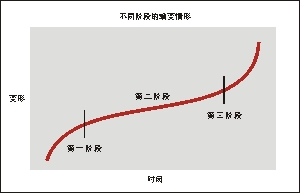
Esempiu: a. Se a tensione in a gamma di tensione di disignu hè 0.2% è a vita di travagliu necessaria hè 5 anni,
u range di tensione hè 15.1MPa. b. 100 ghjorni è a tensione 20.7MPa produce 0.1% deformazione
Questi dati ponu esse sustituiti in formule di ingegneria, ma deve esse nutatu chì sò solu
applicabile à cuscinetti speciali in ambienti di temperatura speciale. A curva istantanea rapprisenta
a deformazione immediata sottu a pressione applicata - torna à a so forma originale quandu a pressione hè
sguassatu. Tutti l'altri cambiamenti di curva includenu stu valore plus creep per risultatu in a deformazione tutale.
Cum'è cù tutte l'aliaghji, a gamma di pressione ùn hè micca solu ciò chì agisce nantu à l'aliati di zincu, u funziunamentu
A temperatura pò ancu pruvucà l'alliage à creep. A deformazione di u primu livellu hà pocu effettu nantu à a lega
N ° 3, cusì a deformazione di u sicondu livellu pò ièssiri usatu pi stimà l 'espansione generale è
cuntrazzioni di l'alia, vale à dì, a deformazione di u terzu livellu sottu pressione à longu andà è alta.
ambienti. A rilazioni di deformazione, pressione è temperatura di u secondu gradu di l'alliages
N ° 3 è N ° 5 sò mostrati in i so diagrammi, rispettivamente. Si deve esse nutatu chì u primu gradu creep
U cumpurtamentu di l'altri alleati hè ancu impurtante è ùn deve esse trascuratu.
L'alliati di zincu sò sottumessi à l'invechjamentu, soprattuttu à temperature elevate. I testi anu dimustratu chì dopu à dui
anni, a lega riducerà l'allungamentu di scorrimentu di 16% à a temperatura di l'ambienti, sottu à alta pressione,
o à 75-95 ° C per trè anni. Per quessa, un fattore di 0.8 deve esse aghjuntu à a gamma di forza di pulling.
Calculate cum'è seguita.
Utilizendu i dati da Alloy No. 3, un incrementu di 10 ° C à a temperatura di serviziu pò esse usatu per
stima u valore di deformazione di Alloy No 5. Per esempiu, l'ambienti di deformazione apprussimativa
di l'alliage N ° 5 hè 10 ° C più altu ch'è quellu di l'alliage N ° 3.
A formula seguente pò accurately calculate a deformazione di N ° 3 è ZA8 zinc alliati trà
25 °C è 120 °C:

In a formula sopra
σ=Forza massima tollerabile (Mpa)
T = Température (K)
t = vita di travagliu (secondi)
n = indice di pressione = 3.5
Q = energia di attività = 106 kJ / mol = 106 kJ / mol
R = constante di gas = 8.3143x10-3kJ/mol K
C' = constante ottenuta da a tabella sottu
Sustituzioni custanti in formule

A formula sopra pò calculà l'indice di pressione cumpletu, a temperatura, a vita di creep è l'indice di pressione in 50MPa per ogni cundizione di scorrimentu in a gamma di 0.2% à 1%.
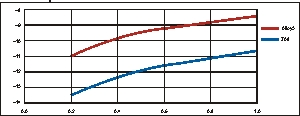
U gradu di creep di a maiò parte di l'alea hè inestabile. Ancu dui campioni apparentemente identici ponu esse sfarenti per via di a so vita di creep rispettiva (range di espansione), cusì sia e dati ottenuti in a prova o in a formula, unu o dui fattori attuali supplementari sò ancu impurtanti. Si deve esse cunsideratu secondu diverse situazioni.

 EN
EN  ES
ES RU
RU PT
PT SV
SV DE
DE FR
FR
